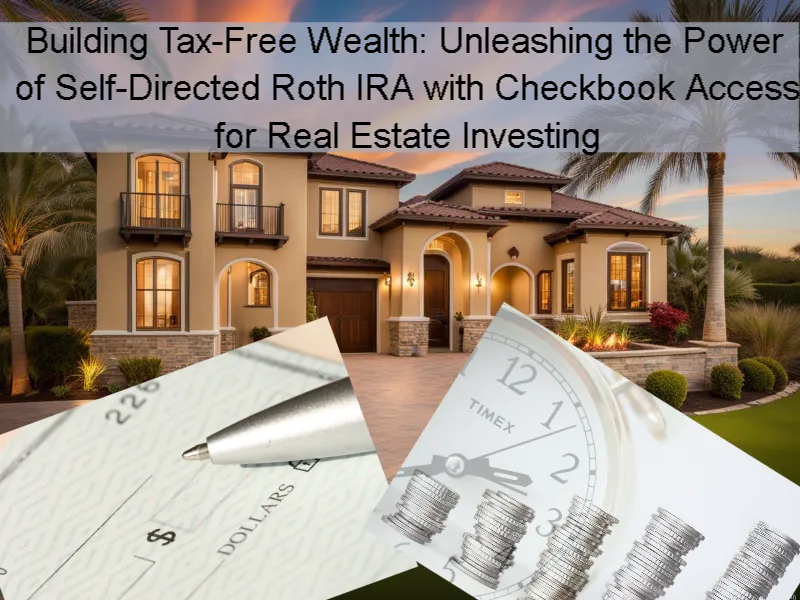Passive Apartment Investing: Everything You Need to Know

Introduction
Looking to passively invest in apartments? You're not alone. More investors are discovering that apartment investing offers one of the most reliable paths to building long-term wealth without the demands of active property management. Whether you're a busy professional seeking diversification or a retiree looking for steady income, passive apartment investing provides an accessible entry point into real estate without requiring hands-on involvement in property operations.
Passive apartment investing allows you to build wealth through multifamily real estate without dealing with tenant calls at midnight or handling maintenance headaches. This investment approach lets you contribute capital to apartment properties while professional teams manage everything from tenant screening to property repairs. The contrast with active real estate investing is stark—instead of becoming a hands-on landlord, you become a silent partner who enjoys the benefits without the daily responsibilities.
Passive apartment investing allows you to build wealth through multifamily real estate without dealing with tenant calls at midnight or handling maintenance headaches. This investment approach lets you contribute capital to apartment properties while professional teams manage everything from tenant screening to property repairs. The contrast with active real estate investing is stark—instead of becoming a hands-on landlord, you become a silent partner who enjoys the benefits without the daily responsibilities.
Multifamily properties have captured the attention of savvy investors who want to passively invest in apartments, particularly those frustrated with unpredictable stock market swings and disappointing returns from traditional investments. The appeal is straightforward: consistent rental income from multiple units, portfolio diversification beyond stocks and bonds, and attractive tax benefits that can significantly enhance your overall returns. This creates valuable real estate passive income opportunities for sophisticated investors.
For high-net-worth individuals, retirement-focused investors, and professionals seeking reliable income streams, apartment syndication investing offers a compelling alternative to conventional investment strategies. CJR Capital Ventures, LLC specializes in multifamily investment opportunities that allow accredited investors to participate in large-scale apartment acquisitions without the typical burdens of property ownership. This comprehensive guide will walk you through everything you need to know about passive apartment investing, from basic concepts to advanced strategies that can help you build generational wealth.
What Is Passive Apartment Investing?

Passive apartment investing represents a fundamental shift from traditional real estate ownership models. When you passively invest in apartments, you provide capital to acquire multifamily properties while experienced operators handle all aspects of property management, from tenant relations to capital improvements. This structure creates a true passive income stream where your primary responsibility is choosing the right investment opportunity and contributing your capital.
The core principle revolves around partnership between investors and professional management teams. Unlike active real estate investing, where you might find yourself unclogging toilets or chasing late rent payments, passive investment allows you to focus on your primary career or other interests while your real estate investments work in the background. Professional property managers handle leasing, maintenance, tenant issues, and all the operational complexities that come with apartment ownership.
This hands-off approach proves ideal for:
- Busy professionals who want real estate exposure without time commitment
- Retirees seeking stable income streams
- Anyone who wants wealth-building potential without property management expertise
- Investors who prefer to focus on their primary career while investments work passively
The model essentially allows you to act as a bank, providing capital in exchange for a share of the property's income and appreciation, while others handle the day-to-day operations that make the investment profitable.
Why Invest Passively in Apartments?
Steady Passive Income
Apartment properties generate income through monthly rent payments from multiple tenants, creating a diversified income stream that's less vulnerable to individual tenant turnover. When one unit becomes vacant, the remaining occupied units continue generating revenue, providing stability that single-family rentals cannot match. This multi-tenant structure helps maintain consistent cash flow even during challenging market conditions.
Professional property management companies typically maintain higher occupancy rates through effective marketing, tenant screening, and retention strategies. They understand local rental markets and can adjust rents appropriately to maximize income while minimizing vacancy periods. This expertise translates into more predictable returns for passive investors who want to rely on their real estate passive income for financial planning.
Diversification Beyond Traditional Assets
Real estate historically shows low correlation with stock and bond markets, meaning apartment investments often perform independently of your traditional portfolio holdings. When stock markets experience volatility, well-located apartment properties frequently maintain stable performance because people always need housing regardless of economic conditions.
This diversification provides multiple benefits:
- Reduced overall portfolio risk through low correlation with stock/bond markets
- Stable performance during stock market volatility
- Spread of risk across multiple units and tenants
- Geographic diversification opportunities across different markets
Multifamily properties offer additional diversification within the real estate sector itself. Unlike investing in a single-family rental property, apartment buildings spread risk across multiple units and tenants. Geographic diversification is also possible when you participate in syndications across different markets, further reducing concentration risk in any single location or property type.
Inflation Protection
Rising inflation often leads to higher rental rates, making apartment investments a natural hedge against decreasing purchasing power. Property owners can typically adjust rents annually or upon lease renewals, allowing apartment investments to maintain their real value over time. This inflation protection is particularly valuable for retirement planning, where fixed-income investments might lose purchasing power over decades.
Construction costs and land values also tend to rise with inflation, potentially increasing the underlying value of apartment properties. This dual benefit of rising income and asset values makes apartment investing an attractive long-term wealth preservation strategy for investors concerned about inflation's impact on their financial future.
Professional Management Excellence

Experienced apartment operators bring specialized knowledge that individual investors rarely possess. They understand market dynamics, tenant psychology, maintenance optimization, and regulatory compliance issues that can significantly impact property performance. Their expertise often translates into higher occupancy rates, better tenant retention, and more efficient operations than individual investors might achieve.
Property management companies also have established relationships with contractors, suppliers, and service providers, often securing better pricing and faster response times for maintenance and improvements. This professional network effect can enhance property performance and investor returns while eliminating the learning curve and relationship-building that individual investors would need to undertake.
Exploring Passive Apartment Investment Vehicles
Real Estate Syndication
Real estate syndication creates a partnership structure where sponsors (general partners) identify, acquire, and manage apartment properties while limited partners (passive investors) provide the capital. The sponsor handles everything from property sourcing and due diligence to financing, management, and eventual sale, while investors contribute capital and receive their proportional share of income and profits.
CJR Capital Ventures, LLC exemplifies this syndication model by carefully selecting multifamily properties with strong income potential and managing them professionally to maximize investor returns. Their approach eliminates the typical challenges of apartment ownership while providing access to larger, more profitable properties that individual investors might not be able to acquire independently. This structure allows investors to participate in institutional-quality real estate investments with the same professional management that large real estate companies employ.
"Real estate syndications allow individual investors to access institutional-quality properties and professional management that would otherwise be unavailable to them. It's like having a team of experts working for you while you remain completely passive." - Barbara Corcoran, Real Estate Expert and Shark Tank Investor
Syndications often target higher returns than publicly traded alternatives because they can focus on specific market opportunities and employ active management strategies to increase property value. Investors benefit from the sponsor's expertise while maintaining a truly passive role in the investment process.
Real Estate Investment Trusts (REITs)
REITs allow investors to buy shares in companies that own and operate income-producing real estate, including apartment complexes. Public REITs trade on stock exchanges like regular stocks, providing liquidity that direct real estate investments cannot match. These investments distribute most of their income to shareholders as dividends, creating a steady income stream without the minimum investment requirements of private syndications.
Private REITs operate similarly but don't trade on public exchanges, potentially offering more stable returns without the volatility of public markets. Many private REITs focus specifically on apartment properties, allowing investors to target their exposure to multifamily real estate while maintaining professional management and diversification across multiple properties. This apartment reit investing approach provides another avenue for passive participation.
Both public and private REITs handle all property management responsibilities, making them truly passive investments. However, public REITs can experience stock market volatility that may not reflect underlying property performance, while private REITs typically have less liquidity but may provide more stable returns aligned with actual real estate performance.
Real Estate Funds
Real estate funds pool capital from multiple investors to acquire diversified portfolios of apartment properties. Closed-ended funds raise capital for a specific period and typically have a defined investment timeline, while evergreen funds continuously accept new investors and may hold properties indefinitely. These funds provide diversification across multiple properties and markets while maintaining professional management.
Fund structures often allow for lower minimum investments than direct syndications, making apartment investing for beginners more accessible. Professional fund managers handle all aspects of property acquisition, management, and disposition, providing investors with exposure to institutional-quality real estate portfolios without requiring substantial capital commitments.
Crowdfunding Platforms
Online crowdfunding platforms have democratized access to apartment investments by allowing smaller investors to participate in deals that previously required substantial minimum investments. These platforms pool capital from numerous investors to fund apartment acquisitions, renovations, or developments. Many platforms specialize in apartment crowdfunding platforms that focus specifically on multifamily properties.
The accessibility of crowdfunding makes it particularly attractive for investors who want to passively invest in apartments but lack the capital for traditional syndications. However, investors should carefully evaluate platform track records, fee structures, and the quality of underlying investments before committing capital.
Tax Advantages of Passive Apartment Investing


Depreciation Benefits
Apartment properties qualify for depreciation deductions that allow investors to write off the building's cost over 27.5 years, even while the property may be appreciating in value. This non-cash deduction reduces taxable income from the property, potentially allowing investors to receive tax-free cash flow even when the property generates positive income. The depreciation benefit continues throughout the holding period, providing ongoing tax advantages.
Depreciation creates a unique situation where investors can receive current income while building equity in an appreciating asset, all while reducing their tax burden. This triple benefit makes apartment investments particularly attractive for high-income earners seeking tax-advantaged income streams.
Cost Segregation Studies
Professional cost segregation studies can accelerate depreciation by identifying components of apartment buildings that qualify for shorter depreciation schedules. Items like appliances, flooring, and certain electrical systems may qualify for 5, 7, or 15-year depreciation instead of the standard 27.5-year schedule for the building structure. This acceleration creates larger tax deductions in the early years of ownership.
The front-loaded tax benefits from cost segregation can significantly improve cash-on-cash returns and overall investment performance. Many apartment syndications employ cost segregation studies to maximize tax benefits for their investors, providing additional value beyond the basic depreciation benefits.
1031 Exchange Opportunities
When apartment investments are sold, investors may be able to use 1031 exchanges to defer capital gains taxes by reinvesting proceeds into similar properties. This tax deferral strategy allows investors to compound their returns over time without paying taxes on each transaction, potentially building wealth more efficiently than taxable investments.
Many apartment syndications structure their exit strategies to accommodate 1031 exchanges, providing investors with flexibility to continue building their real estate portfolios while deferring tax obligations. This capability makes apartment investing particularly attractive for long-term wealth building strategies.
Pass-Through Tax Benefits
Most apartment investments are structured as limited liability companies or limited partnerships that pass income and losses directly to investors without entity-level taxation. This structure allows investors to receive their share of property income and deductions on their personal tax returns, potentially optimizing their overall tax situation.
Passive activity losses from apartment investments may offset other passive income, and in some cases, real estate professionals can use these losses to offset ordinary income. These tax benefits can significantly enhance the after-tax returns from apartment investments compared to traditional investment alternatives.
Understanding the Risks and Challenges
Market and Economic Risks
Local and national economic conditions can impact rental demand and property values, affecting investment returns. Economic downturns may lead to increased vacancy rates, reduced rent growth, or declining property values. However, well-located apartment properties often prove more resilient than other real estate types because housing remains a necessity even during challenging economic periods.
Effective risk mitigation strategies include:
- Investing in diverse geographic markets
- Focusing on properties in stable employment centers
- Choosing sponsors with experience through various economic cycles
- Evaluating market fundamentals and economic indicators
CJR Capital Ventures, LLC carefully evaluates market fundamentals and economic indicators when selecting investment opportunities to minimize exposure to market risks.
Lack of Direct Control
When you passively invest in apartments, you rely entirely on the sponsor and management team to make day-to-day decisions that affect your investment performance. Poor management decisions, inadequate maintenance, or ineffective leasing strategies can negatively impact returns without your ability to intervene directly.
The key to mitigating this risk lies in thorough due diligence on the sponsor's track record, management capabilities, and investment strategy. Reviewing past performance, speaking with previous investors, and understanding the sponsor's approach to property management can help identify reliable partners who will protect and enhance your investment.
Liquidity Considerations
Most passive apartment investments involve commitments of several years, during which your capital may not be readily accessible. Unlike stocks or bonds that can be sold quickly, real estate investments typically require the sponsor to sell the property or refinance to return capital to investors. This illiquidity means you should only invest capital that you won't need for the investment's expected holding period.
Planning for illiquidity involves maintaining adequate liquid reserves and understanding each investment's expected timeline before committing capital. Some investment structures, like public REITs, offer more liquidity but may sacrifice some of the benefits of direct real estate ownership.
Capital Call Possibilities
Some apartment investments may require additional capital contributions beyond the initial investment if unexpected expenses arise or if investors approve capital improvements that exceed initial projections. While not common in well-structured deals, capital calls can create financial strain for investors who haven't planned for additional commitments.
Understanding the investment structure and potential for capital calls before investing allows you to plan appropriately and avoid financial stress if additional capital is needed. Many sponsors structure deals to minimize capital call risk, but investors should always understand the possibilities and plan accordingly.
How to Get Started with Passive Apartment Investing

Follow these steps to begin your passive apartment investing journey:
- Define your investment objectives and timeline
- Assess your financial readiness and risk tolerance
- Complete education and due diligence research
- Choose the right investment vehicle for your needs
- Partner with experienced professionals
Define Your Investment Objectives
Before you can passively invest in apartments effectively, you need clarity on your financial goals and investment timeline. Are you seeking current income to supplement retirement cash flow, or are you focused on long-term appreciation for wealth building? Your objectives will determine which types of apartment investments align with your needs and risk tolerance.
Consider how apartment investments fit within your overall portfolio allocation. Many financial advisors recommend allocating 10-20% of investment portfolios to real estate, but your specific situation may warrant a different allocation based on your age, income, and other investments.
Assess Your Financial Readiness
Evaluate your available capital, liquidity needs, and risk tolerance before committing to apartment investments. Most private syndications require minimum investments of $25,000 to $100,000, while some opportunities may require even higher minimums. Ensure you have adequate liquid reserves beyond your real estate investments for emergencies and other financial needs.
Accredited investor status is required for many private apartment investments, which means meeting specific income or net worth thresholds. Understanding these requirements helps you identify which investment opportunities are available to you and plan accordingly.
How much risk can you comfortably accept in exchange for potentially higher returns?
Education and Due Diligence
Successful apartment investing requires understanding market dynamics, investment structures, and sponsor evaluation criteria. Research different metropolitan areas to understand job growth, population trends, and rental market conditions that drive apartment investment performance. This knowledge helps you evaluate investment opportunities and ask informed questions during the due diligence process.
Learning to evaluate sponsors is crucial since your investment success depends largely on their expertise and execution capabilities. Review their track records, speak with previous investors, and understand their investment and management strategies before committing capital to any opportunity.
Choose the Right Investment Vehicle
Different passive apartment investment options serve different investor needs and preferences. Syndications may offer higher return potential but typically require larger minimum investments and longer holding periods. REITs provide liquidity and diversification but may offer lower returns and less control over investment selection.
Consider starting with smaller investments to gain experience before committing larger amounts of capital. This approach allows you to learn from actual investment experience while limiting your exposure as you develop expertise in evaluating opportunities and sponsors.
Partner with Experienced Professionals
Working with established sponsors like CJR Capital Ventures, LLC provides access to institutional-quality investment opportunities and professional management expertise that individual investors typically cannot access independently. Experienced sponsors have established relationships with brokers, lenders, and service providers that can enhance investment performance and reduce risks.
Consider consulting with financial advisors, tax professionals, and real estate attorneys who understand passive real estate investing to ensure your investment strategy aligns with your overall financial plan and tax situation. Professional guidance can help you avoid common mistakes and optimize your investment approach for your specific circumstances.
Conclusion
Passive apartment investing presents a compelling opportunity for investors seeking stable income, portfolio diversification, and tax advantages without the responsibilities of direct property management. Through professional management and well-structured investment vehicles, you can access the wealth-building potential of multifamily real estate while maintaining your focus on other priorities and interests.
The combination of steady rental income, inflation protection, and attractive tax benefits makes apartment investments particularly valuable for long-term wealth building strategies. Whether you choose syndications, REITs, or other passive investment vehicles, the key to success lies in thorough due diligence, realistic expectations, and partnerships with experienced professionals who understand the complexities of apartment investing.
Market demand for quality rental housing continues to grow as homeownership becomes less affordable for many Americans, creating ongoing opportunities for apartment investors. By carefully selecting investment partners and maintaining a long-term perspective, passive apartment investing can become a cornerstone of your wealth-building strategy. Consider exploring the multifamily investment opportunities available through experienced sponsors like CJR Capital Ventures, LLC to begin building your passive real estate income portfolio.
FAQs
Is Passive Apartment Investing Only for Accredited Investors?
Not all passive apartment investments require accredited investor status. Public REITs and certain crowdfunding platforms welcome non-accredited investors with relatively low minimum investments. However, many private syndications and real estate funds do require accredited status, which means meeting specific income or net worth requirements. Accredited investors typically have access to more investment opportunities and potentially higher returns, but non-accredited investors can still participate in apartment investing through publicly available options.
How Is Passive Apartment Investing Different from Owning a Rental Property?
The fundamental difference lies in your level of involvement and responsibility. When you own a rental property directly, you handle tenant screening, maintenance requests, rent collection, and all the operational aspects of property management. Passive apartment investing eliminates these responsibilities entirely—you contribute capital and receive income while professional teams handle all aspects of property operations. This difference allows you to benefit from real estate investing without the time commitment, stress, and expertise required for direct property ownership.
What Kind of Returns Can I Expect from Passive Apartment Investing?
Returns vary significantly based on the investment vehicle, property location, market conditions, and sponsor expertise. Private syndications often target preferred returns of 6-8% annually, with total returns potentially reaching 15-20% annually when including appreciation and profit distributions. REITs typically provide dividend yields of 3-6% plus potential share price appreciation. However, all real estate investments carry risks, and past performance doesn't guarantee future results. Always review each investment's projections, underlying assumptions, and sponsor track record before making investment decisions.































